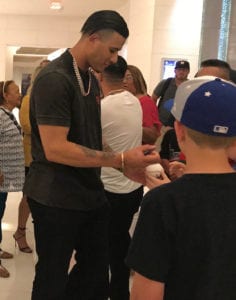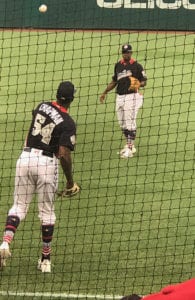It’s no secret that newspapers, large and small, are financially hurting. We know the reasons as well. The internet makes shopping possible from our bedrooms and sometimes at a cheaper price than a downtown store. We can send birthday gifts to our grandchildren and friends while we are still in our pajamas and slippers, and the items will arrive nicely wrapped and on time. This in turn makes retailing difficult, from box stores and malls to neighborhood shops. So many of the large (like Toys “R” Us, Genovese Drug Stores) and the smaller (like Swezey’s) and mom-and-pop stores have given up. While the larger stores advertised in the dailies, these smaller businesses reached their customers in the immediate vicinity through the local papers, and they were the backbone of the hometown newspapers’ financial model. Fewer such businesses are left, and some of those place their ads only on the internet. The nature of shopping and of advertising has been profoundly disrupted.
So we have a publication like the New York Daily News, once the paper with the highest circulation in America, cutting half their editorial department in order to survive. And we have any number of community newspapers closing their doors and leaving their hometowns without an effective voice to protect them. Failure to adequately monetize their own investments in the internet by struggling papers has been part of the problem.
The difference between larger dailies and smaller weeklies is more than size. When a daily cuts back or gives up, there are other news sources that can fill the gap for national and international news. But when the community papers and websites disappear, the local issues that arise at school board or town board or civic or chamber of commerce meetings, or on a particular block with high crime or tainted water or garbage dumping or illegal development, those are not necessarily picked up by the remaining bigger news outlets. The stop signs and potholes are local matters, and for the most part they need local coverage.
That recognition is the reason that the State of New Jersey has now put up millions of dollars in its budget to help pay for community journalism. Say what? How can that be? After all, news media are supposed to be the watchdogs of the people against those who would take advantage, especially those corrupt officials in government. So how can government subsidize media and the residents still expect the media to independently investigate government?
Since the earliest days and the first leaders of our republic, people have known that a democracy cannot exist without independent news sources. That is why the First Amendment — the first before all others — protects freedom of the press. It is the only industry enshrined in our Constitution. And for those local legislators and executives and judges, the local newspapers are the ones who disseminate the news of what our officials are doing to help us.
So it is not so odd that local officials want to come to our aid. They need us just as we need to watch over them. Can this relationship exist in an independent, nonpartisan fashion?
I think it can if there is a neutral party between us. Public television, like my favorite PBS “NewsHour,” and radio stations get funding (not a lot) from the government. “It’s not about saving journalism in New Jersey,” Mike Rispoli, director of an advocacy group on behalf of local media, said in The New York Times. “It’s about making sure our communities are engaged and informed.”
So if funds are awarded to media by boards made up of representatives from the communities, like state universities, community organizations and technology groups as well as government officials, the goal of independent journalism can be met. There is a fine line here not to be crossed.
See editorial for another view on this topic.








